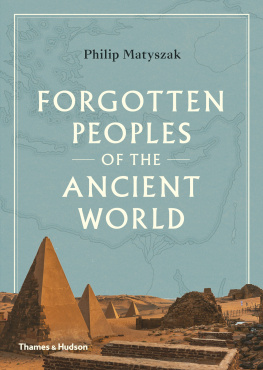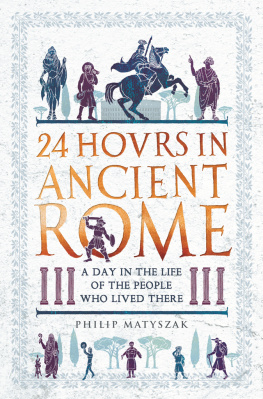Thanks are due to Adrian Goldsworthy with whom I first discussed the idea, the Classics Library in Cambridge University for the use of their facilities while I put it together, to Barbara Levick for putting it together again, but correctly this time, and to the staff at Thames & Hudson who supported the project from beginning to end.
Everything that happened to both peoples, Romans and Carthaginians, was, at base, caused by one thing by one mind, one man. By this I mean Hannibal.
Polybius 9.12
More than five hundred years before Hannibal was born, while the site of Rome was still a barren marsh, a storm blew a shipload of refugees onto the African shore near the newly founded city of Kart Hadasht, known today as Carthage.
The queen of that city was Dido, daughter of a Phoenician king. Fleeing from her native land, she had been offered by an African ruler both sanctuary and all the land she could cover with the hide of a bull. With the spirit that was to typify Carthaginian merchant venturers of future generations, Dido had the bulls skin cut into tiny strips, and used these strips to enclose an area of land large enough to form the basis of her future city.
Now, with this city thriving, Dido welcomed the newcomers from the sea in the hope that they would swell the ranks of Carthages citizenry. The new arrivals were led by Aeneas, a favourite of the goddess Venus, and a nobleman from the fallen city of Troy. Dido fell passionately in love with him. While out hunting, the pair sheltered from a storm in a cave, and there consummated their love.
Dido had no sooner found pure happiness than it was snatched from her. While he slept, Aeneas was visited in his dreams by Mercury, the messenger of the gods. Mercury reminded Aeneas that his destiny lay in Italy, and that he should forthwith abandon his present dalliance.
Dido noted the change in her lover, and became hysterical at the thought that he might abandon her. Torn between love and duty, Aeneas could not bring himself to bid Dido a proper farewell. Instead, one morning, Dido awoke to find that Aeneas had boarded his galley, and was even then setting sail. Distraught, she ordered her sister Anna to make a pyre of all those possessions which the Trojan had left behind in his guilty flight. Before anyone could suspect her intentions, she threw herself into the flames and perished. Her last words were a malediction to Aeneas and his descendants:
These are my prayers, and this my dying will;
And you, my Carthaginians, must every curse fulfil.
Perpetual hate and mortal wars proclaim,
Against that prince, his people, and their name.
Our arms, our seas, our shores, opposed to theirs;
And the same hate descend on all our heirs!
Virgil Aeneid 4
So, according to legend, began the enmity between Carthage and Rome. The reality was hardly better. Their first-known diplomatic contact marked the warmest point in their relationship, and even that was no more than wary tolerance. At the time, Rome was a fledgling power in Latium, while Carthage was the dominant power in the western Mediterranean. The first known treaty between the two states was in 508 BC, by which the Romans agreed not to interfere with Carthaginian trade in the region, and Carthage agreed to stay out of Romes affairs in Italy.
In 280 BC, the Carthaginians shared with Rome a common interest in repelling the invasion of one of the successors to Alexander the Great, King Pyrrhus. In fact the Carthaginian fleet fought on the Roman side. But the growth of Roman power after the war caused deep unease in Carthage, and hastened the inevitable clash.
This clash came when the Romans involved themselves with affairs in Sicily. Messana in north Sicily was seized by a band of mercenaries called the Mamertines. At this time Carthage controlled the west of the island, and the Greeks the east. Wars between the two were frequent and both sides now hastened to seize Messana for themselves. The Mamertines sought protection from the remaining regional power Rome. War was not inevitable, but neither goodwill nor diplomacy was forthcoming. In 264 BC Rome and Carthage became locked in a grim struggle that lasted for the next twenty-three years.
The war cost hundreds of thousands of lives and was fought in Africa, Sicily and the adjacent seas. The Romans invaded Africa, but their general, Atilius Regulus, was defeated and his army destroyed. In the war at sea the Romans raised fleet after fleet, only to see each destroyed in turn. Some were sunk by the Carthaginians but more by the weather, since the Romans were remarkably poor sailors.
In Sicily the Romans had more success. As formidable by land as they were vulnerable at sea, the forces of Rome rapidly drove the Carthaginians from the hinterland and penned them under siege in their port cities. That they did not drive Carthage from the island altogether was due to the efforts of a remarkable Carthaginian commander, Hamilcar Barca.
Hamilcar was a Barcid, one of the leading Carthaginian families of that time. He had begun his war by raiding along the Italian coast, and when he arrived in Sicily, he established himself near the modern city of Palermo. From there he conducted a daring guerrilla campaign. In 244 BC he captured the city of Eryx, and made this his base of operations. By 241 Carthage, though almost completely drained of money and manpower, made a last desperate effort to supply Hamilcar with men and munitions. At the Aegates Islands, the Romans under the admiral C. Lutatius Catulus intercepted the Carthaginian supply ships and destroyed them. For Carthage, this was the last straw. They made peace with Rome, agreeing to abandon their possessions in Sicily and to pay a huge indemnity of 3,200 talents of silver (a talent was a weight of just over 25 kilograms).
This treaty indirectly precipitated another conflict. The size of the indemnity meant that Carthage could not afford to pay the mercenaries who had fought for her, and who now rose in mutiny. Hamilcar returned from Sicily and played a leading part in the subsequent campaign, the viciousness of which can be judged from its name the truceless war. To Carthages impotent fury, Rome took blatant advantage of her rivals weakness and annexed the Carthaginian province of Sardinia.
With the mercenaries defeated, Hamilcar set off north again, this time to Spain, where Carthage intended to build a new empire and gain from it the silver and manpower to stand against Rome. Polybius takes up the story at the point where Hamilcar had sacrificed to the gods for the success of his mission.
Then he [Hamilcar] called his son Hannibal to him, and asked him with fatherly tenderness if the boy wanted to go with him [to Spain]. As a boy would, the overjoyed Hannibal begged his father to allow him. Hamilcar took Hannibal by the hand and led him to the altar. There he commanded Hannibal to lay his hand on the body of the sacrificial victim, and to swear that he would never be a friend to the Romans.
Polybius 3.11
Hannibal was about nine years old at this time. He must have had an exciting boyhood in Spain as Hamilcar expanded Carthaginian influence from his base at Gades (modern Cdiz). Spain was not a united country but a patchwork of different and often warring peoples whom Hamilcar subdued with a mixture of force and diplomacy. In 231 the Romans sent an embassy to find out what Hamilcar was up to, and he satisfied them by saying that he was seeking in Spain the money to pay the Roman indemnity. When, two years later, he drowned while crossing a river, command went to his son-in-law Hasdrubal, who continued his policies. Roman concerns were alleviated by the Ebro Treaty of 226 by which Hasdrubal promised to confine his activities to the south of the Ebro river.
Hannibal saw negotiations at first hand and witnessed dozens of minor sieges and skirmishes. The modern concept of teenagers as somewhere between child and adult did not exist in the ancient world, and Hannibal was given charge of troops at an early age. He also became a married man, taking a wife from the city of Castulo. By his mid-twenties, Hannibal was an experienced commander.
Next page












